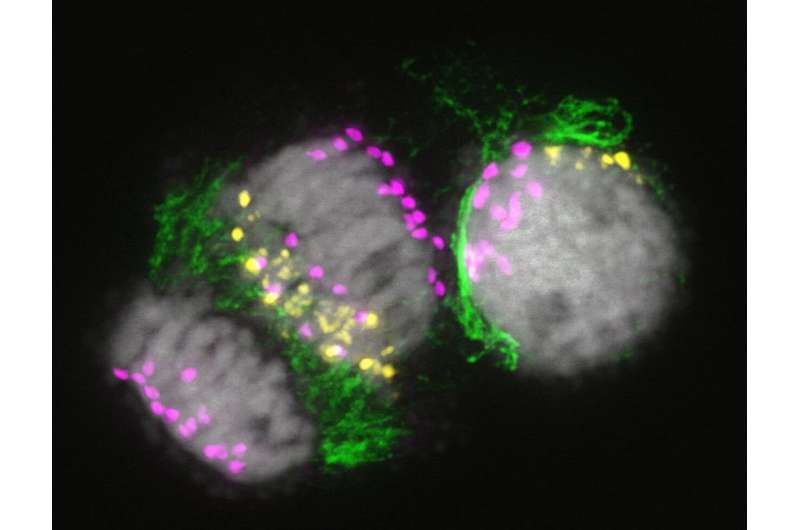Researchers identify the process behind the organ-specific elimination of chromosomes in plants

Typically, each somatic cell in an organism holds the same amount of DNA. However, researchers have, for the first time, shed light on a process that leads to tissue-specific differences in DNA content in plants. With an unusually high efficiency rate of 100%, this programmed chromosome elimination mechanism could become a valuable genetic tool for plant breeding or medical applications.
While we often think of somatic cells in an organism as containing the same DNA and therefore the same number of chromosomes, it is surprising how often this is not the case. In humans, such differences in chromosome numbers, called genetic mosaicism, often occur unintentionally and express themselves in the form of illnesses. However, some plants and animals systematically ensure that the DNA content between some of their organs differs. While the phenomenon of programmed DNA elimination has been known since 1887, the process with which plants achieve it remained elusive. Researchers from the Leibniz Institute of Plant Genetics and Crop Plant Research (IPK) in Gatersleben have now finally been able to explain the underlying mechanisms.
Within their investigation, the researchers focused on the organ-specific elimination of B chromosomes within goatgrass, Aegilops speltoides. B chromosomes are "selfish" chromosomes, which bring no apparent benefit to the organism. Goatgrass, a progenitor of our common wheat, can carry up to eight of these supernumerary chromosomes. However, while B chromosomes can be found in the leaves, stem and flower of the grass, their roots are a B chromosome-free zone.
Through the detailed investigation and comparison of Ae. speltoides strains with and without B chromosomes, the researchers gained novel insights into the origins of B chromosomes. Further, their observations confirmed that the elimination of selfish chromosomes is a strictly controlled root-specific process. The elimination starts with the onset of the embryonic tissue differentiation and can eradicate up to 100% of the targeted B chromosomes. As Prof. Andreas Houben let us know: "Elimination of B chromosomes occurs due to mitotic chromosome nondisjunction. This means that the cellular transport of the B chromosomes is impaired, and as a consequence, the B chromosomes are separated from the standard chromosomes. Then, in the final step of the elimination, the DNA of B chromosomes is degraded."
With its exceptional efficiency rate, the programmed elimination process of chromosomes has potential as a highly useful addition to the genetic toolbox. When induced artificially, it could enable the elimination of chromosomes or chromosome sets for medical or plant breeding purposes. Meanwhile, plants continue to benefit from their process in a more down-to-earth way—the research suggests that the removal of the supernumerary chromosomes spares the root cells from having potentially harmful B chromosome located genes.
The study is published in Nature Communications.
More information: Nature Communications, DOI: 10.1038/s41467-020-16594-x
Journal information: Nature Communications
Provided by Leibniz Institute of Plant Genetics and Crop Plant Research



















